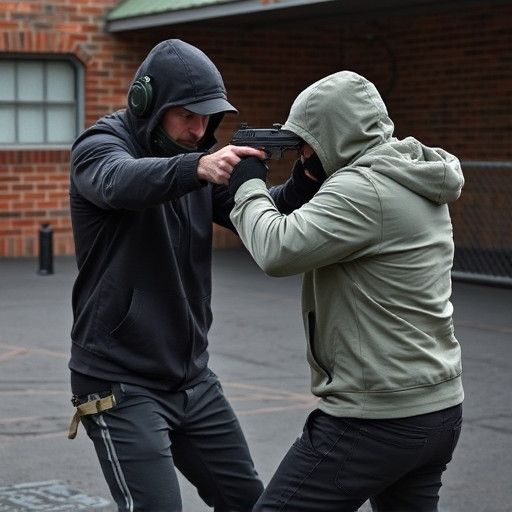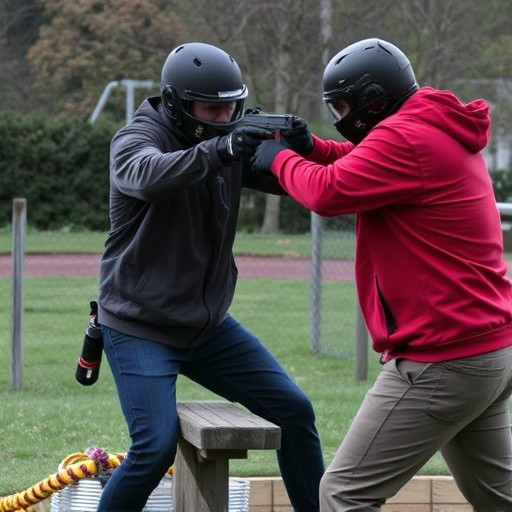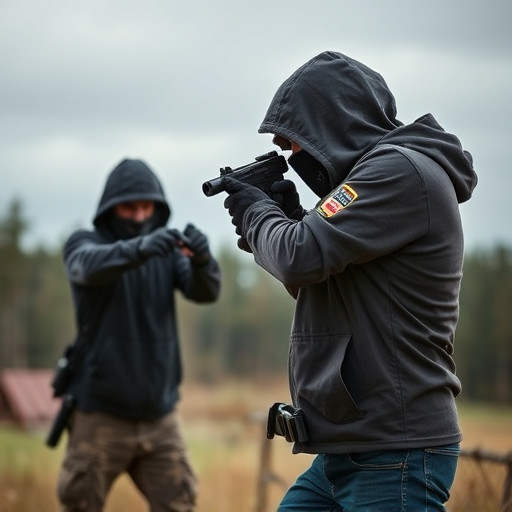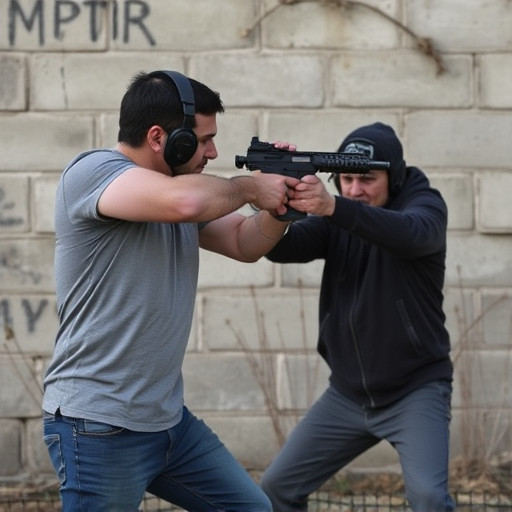Taser Deployment Duration: LED Flashlight Impact & Safety Practices
A tactical stun gun with integrated LED flashlight offers enhanced versatility and strategy in law e…….
A tactical stun gun with integrated LED flashlight offers enhanced versatility and strategy in law enforcement and personal protection, combining disorientation through bright light with electric shock to incapacitate targets. Effective deployment requires proper training on device mechanics, electrode placement, and understanding individual factors affecting paralysis duration. Strict adherence to safety measures and de-escalation strategies is crucial for minimizing risks during usage of these multi-purpose devices.
“Taser deployment has become a common tool in law enforcement, but understanding its effects on paralysis duration is crucial. This article offers an in-depth look at ‘tactical stun guns with LED flashlights’ and their impact. We’ll explore the science behind these devices, delving into how LED lights can potentially extend or reduce paralysis times. Furthermore, we’ll discuss various factors influencing outcomes and provide essential safety measures for law enforcement agencies.”
- Understanding Tactical Stun Guns: A Brief Overview
- The Effect of LED Flashlight on Paralysis Duration
- Factors Influencing Paralysis After Taser Deployment
- Best Practices and Safety Measures for Law Enforcement Use
Understanding Tactical Stun Guns: A Brief Overview

Tactical stun guns, also known as electronic control devices (ECDs), are non-lethal weapons designed to temporarily incapacitate a target through electric shock. These devices have gained popularity among law enforcement agencies and personal protection enthusiasts due to their effectiveness in de-escalating potentially dangerous situations without resorting to lethal force. A tactical stun gun with an integrated LED flashlight offers enhanced versatility, allowing users to illuminate dark areas and assess their surroundings more effectively.
The primary function of a stun gun is to deliver a high-voltage, low-amperage electric current through metal prongs or contacts that make contact with the target’s body. This jolt of electricity disrupts the nervous system, causing muscle spasms and temporary paralysis. The duration of this paralysis can vary based on factors such as the model of the stun gun, its voltage output, the area of contact, and the target’s physical attributes. Effective use requires proper training and understanding of the device’s capabilities to ensure safe and successful deployment.
The Effect of LED Flashlight on Paralysis Duration

The integration of a tactical stun gun with LED flashlight has introduced an intriguing dynamic to law enforcement and self-defense strategies. While the primary function of a stun gun remains to incapacitate individuals through electric shock, the addition of a bright LED light offers a multifaceted advantage. During deployments, the intense beam can disorient suspects, providing officers with crucial seconds to gain control or enable backup’s arrival. This strategic use of light not only enhances safety but also influences the duration of paralysis induced by the stun gun.
The LED flashlight’s effect on paralysis duration is twofold. Firstly, it serves as a powerful distraction, temporarily blinding and disorienting targets, which can lengthen the momentary paralysis caused by the stun gun. Secondly, in well-lit conditions, the light may reduce the effectiveness of certain stun gun models, as the device’s electrical impulses rely on darkness for optimal penetration. This interaction between light and electric shock can result in shorter periods of immobilization, offering a strategic edge in dynamic law enforcement scenarios.
Factors Influencing Paralysis After Taser Deployment

Several factors contribute to the duration and extent of paralysis experienced after a tactical stun gun with LED flashlight deployment. One key factor is the electrical current’s impact on the neuromuscular system. Tasers deliver a high-voltage, low-current electric shock that temporarily disrupts nerve impulses, leading to muscle contractions and loss of control. The intensity and duration of this disruption vary based on factors like the stun gun’s output level and the individual’s body composition, affecting how long paralysis may last.
Additionally, the placement of the electrodes on the target’s body plays a significant role. Contact with larger muscles or nerve bundles can result in prolonged paralysis as these areas have more nerve endings and are responsible for controlling broader movements. The presence of sweat or other substances between the electrodes and the skin can also impact conductivity, potentially leading to longer-lasting effects. Other personal factors like age, overall health, and fitness level may influence recovery time, with younger, healthier individuals typically recovering faster than others.
Best Practices and Safety Measures for Law Enforcement Use

When deploying a tactical stun gun with LED flashlight, law enforcement agencies and officers must adhere to strict best practices and safety measures to ensure minimal risk to both suspects and bystanders. These guidelines are crucial for effective and responsible use of force. Officers should receive comprehensive training on the device’s mechanics, including its activation procedures, range, and potential side effects. Understanding these factors enables them to make informed decisions, especially in high-pressure situations.
Additionally, maintaining a safe distance before firing is paramount. Given that stun guns typically disable individuals through electrical impeding, close proximity increases the risk of collateral damage or unexpected outcomes. Officers should also consider environmental factors, such as wet conditions, which may impact the weapon’s performance. Using these devices in a controlled manner, with clear de-escalation strategies in place, fosters safety for all parties involved.
The use of a tactical stun gun equipped with an LED flashlight can significantly impact paralysis duration during law enforcement operations. By understanding the factors influencing this effect, such as target contact and ambient conditions, officers can employ best practices to ensure safe and effective deployment. Regular training and adherence to safety measures are crucial in minimizing risks associated with taser use, ultimately fostering a more secure environment for both officers and individuals they serve.


